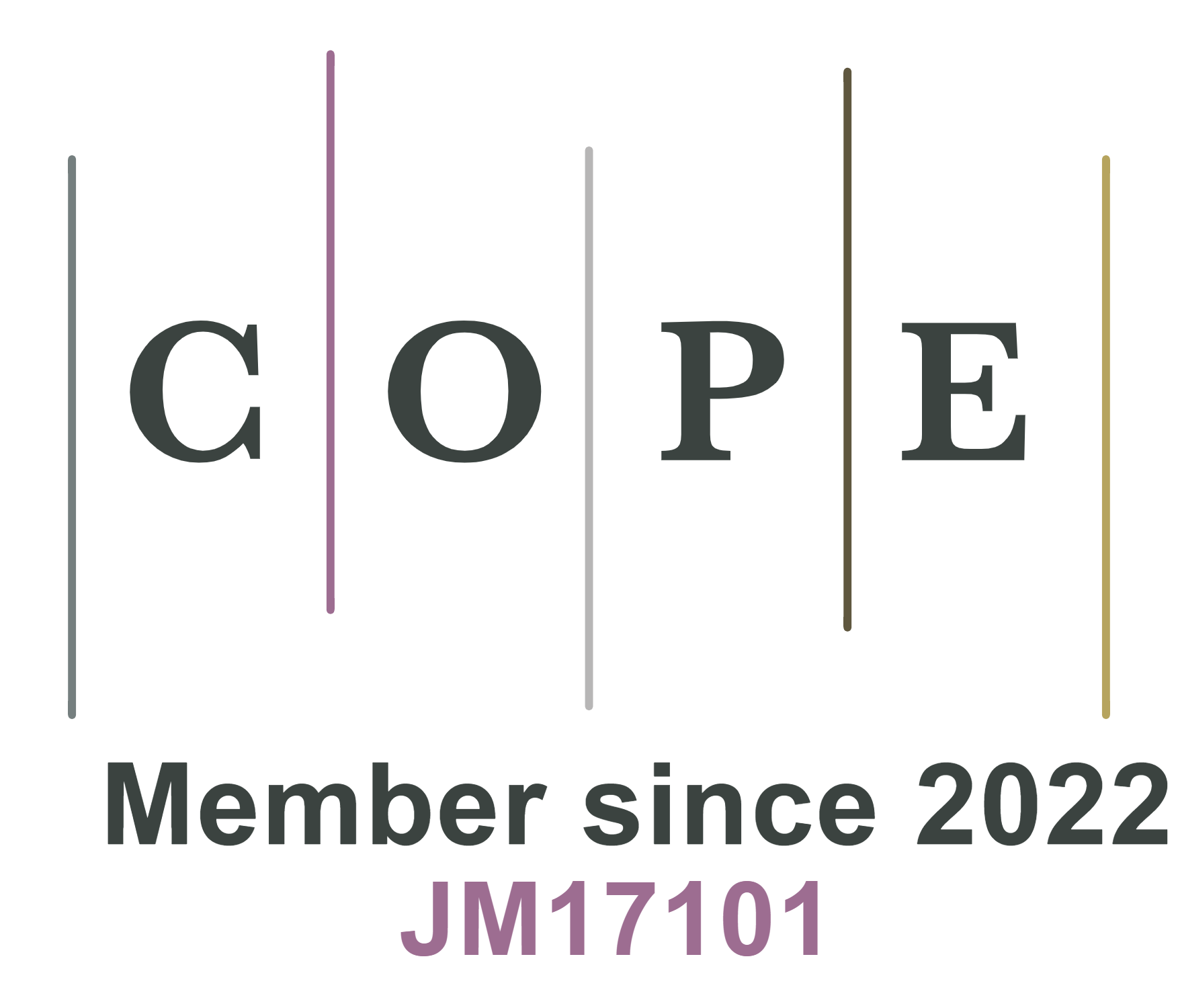REFERENCES
1. Wang, W.; Wang, H.; Wu, Z.; et al. Co/MnO/N-C hybrid derived from N-methyl-D-glucamine as efficient bifunctional oxygen electrocatalysts. Electrochim. Acta. 2018, 281, 486-93.
2. Yin, H.; Li, H.; Zhao, H.; et al. SnSe nanoplates swallowed in carbon nanofibers as the self-standing anode for lithium-ion and sodium batteries with enhanced performance. Int. J. Hydrogen. Energy. 2023, 48, 4789-99.
3. Cruz-Manzo, S.; Greenwood, P. An impedance model based on a transmission line circuit and a frequency dispersion Warburg component for the study of EIS in Li-ion batteries. J. Electroanal. Chem. 2020, 871, 114305.
4. He, B.; Cunha, J.; Hou, Z.; Li, G.; Yin, H. 3D hierarchical self-supporting Bi2Se3-based anode for high-performance lithium/sodium-ion batteries. J. Colloid. Interface. Sci. 2023, 650, 857-64.
5. Zhou, Y.; Wang, C.; Chen, F.; et al. Synchronous constructing ion channels and confined space of Co3O4 anode for high-performance lithium-ion batteries. Nano. Res. 2022, 15, 6192-9.
6. Wen, L.; Cheng, F.; Wang, X.; et al. Recent advances of cobalt-free and nickel-rich cathode materials for lithium-ion batteries. Energy. Mater. 2024, 4, 400054.
7. Fu, S.; Yang, X.; Zhao, P.; Yao, X.; Jiao, Z.; Cheng, L. Regulable electron transfer on ZnS/CoS2/CC prepared by an MOF-on-MOF strategy for robust LIB performance. ACS. Appl. Energy. Mater. 2022, 5, 5159-69.
8. Tian, G.; Zhao, Z.; Sarapulova, A.; et al. Understanding the Li-ion storage mechanism in a carbon composited zinc sulfide electrode. J. Mater. Chem. A. 2019, 7, 15640-53.
9. Li, H.; Luo, J.; Han, D.; et al. Layer-by-layer hetero-carbon modifying ZnS nanocubes anode with improved long-term life for sodium-ion batteries. Ceram. Int. 2023, 49, 18421-31.
10. Wang, J.; Yao, J.; Li, W.; et al. Lithium molybdate composited with carbon nanofibers as a high-capacity and stable anode material for lithium-ion batteries. Energy. Mater. 2022, 2, 200026.
11. Wang, W.; Guan, M.; Wang, Q.; et al. In situ embedment of ZnS nanocrystals in high porosity carbon fibers as an advanced anode material for efficient lithium storage. Acta. Metall. Sin. 2023, 36, 167-76.
12. Zhang, L.; Zhang, M.; Peng, F.; et al. Rationally designed heterostructure ZnS/SnS@N-doped carbon microspheres as high-performance anode for lithium-ion batteries. J. Alloys. Compd. 2022, 910, 164908.
13. He, F.; Wang, Y.; Liu, J.; Yao, X. One-dimensional carbon based nanoreactor fabrication by electrospinning for sustainable catalysis. Exploration 2023, 3, 20220164.
14. Zan, G.; Li, S.; Chen, P.; Dong, K.; Wu, Q.; Wu, T. Mesoporous cubic nanocages assembled by coupled monolayers with 100% theoretical capacity and robust cycling. ACS. Cent. Sci. 2024, 10, 1283-94.
15. Ni, X.; Cui, Z.; Jiang, N.; et al. Hollow multi-nanochannel carbon nanofiber/MoS2 nanoflower composites as binder-free lithium-ion battery anodes with high capacity and ultralong-cycle life at large current density. J. Mater. Sci. Technol. 2021, 77, 169-77.
16. Li, Z.; Yin, Q.; Hu, W.; et al. Tin/tin antimonide alloy nanoparticles embedded in electrospun porous carbon fibers as anode materials for lithium-ion batteries. J. Mater. Sci. 2019, 54, 9025-33.
17. Zhao, S.; Sewell, C. D.; Liu, R.; et al. SnO2 as advanced anode of alkali-ion batteries: Inhibiting sn coarsening by crafting robust physical barriers, void boundaries, and heterophase interfaces for superior electrochemical reaction reversibility. Adv. Energy. Mater. 2020, 10, 1902657.
18. Guan, B.; Sheng, L.; Zhang, N.; et al. Bimetallic metal-organic framework derived transition metal sulfide microspheres as high-performance lithium/sodium storage materials. Chem. Eng. J. 2022, 446, 137154.
19. Ma, Z.; Shi, J.; Wu, D.; et al. Sn-doped thioantimonate superionic conductors with high air stability and enhanced Li-ion conduction for all-solid-state lithium batteries. J. Mater. Chem. A. 2023, 11, 23342-53.
20. Zhang, J.; Wang, Y.; Xia, Q.; et al. Confining polymer electrolyte in MOF for safe and high-performance all-solid-state sodium metal batteries. Angew. Chem. Int. Ed. 2024, 63, e202318822.
21. Xie, D.; Cai, S.; Sun, X.; et al. FeS/ZnS nanoflower composites as high performance anode materials for sodium ion batteries. Inorg. Chem. Commun. 2020, 111, 107635.
22. Zhao, L. P.; Meng, W. S.; Wang, H. Y.; Qi, L. MoS2-C composite as negative electrode material for sodium-ion supercapattery. Acta. Phys. Chim. Sin. 2017, 33, 787-94.
23. Wang, P.; Jiang, Y.; Cao, Y.; Wu, X.; Liu, X. MOF-derived ZnS/NC yolk-shell composites for highly reversible lithium storage. New. J. Chem. 2022, 46, 11101-7.
24. Fan, H. H.; Li, H. H.; Guo, J. Z.; et al. Target construction of ultrathin graphitic carbon encapsulated FeS hierarchical microspheres featuring superior low-temperature lithium/sodium storage properties. J. Mater. Chem. A. 2018, 6, 7997-8005.
25. Qiu, X.; Yu, Y.; Peng, Z.; et al. Cobalt sulfides nanoparticles encapsulated in N, S co-doped carbon substrate for highly efficient oxygen reduction. J. Alloys. Compd. 2020, 815, 152457.
26. Li, Z.; Wang, W.; Zhou, M.; et al. In-situ self-templated preparation of porous core-shell Fe1-S@N, S co-doped carbon architecture for highly efficient oxygen reduction reaction. J. Energy. Chem. 2021, 54, 310-7.
27. Yin, H.; Jia, L.; Li, H. Y.; et al. Point-cavity-like carbon layer coated SnS nanotubes with improved energy storage capacity for lithium/sodium ion batteries. J. Energy. Storage. 2023, 65, 107354.
28. Chen, H.; Zhang, B.; Cao, Y.; et al. ZnS nanoparticles embedded in porous honeycomb-like carbon nanosheets as high performance anode material for lithium ion batteries. Ceram. Int. 2018, 44, 13706-11.
29. Zhou, J.; Lian, J.; Hou, L.; et al. Ultrahigh volumetric capacitance and cyclic stability of fluorine and nitrogen co-doped carbon microspheres. Nat. Commun. 2015, 6, 8503.
30. Ma, Q.; Zhuang, Q.; Liang, J.; et al. Novel mesoporous flowerlike iron sulfide hierarchitectures: facile synthesis and fast lithium storage capability. Nanomaterials 2017, 7, 431.
31. Wang, W.; Gong, J.; Long, Q.; et al. Fe-Fe3N composite nitrogen-doped carbon framework: multi-dimensional cross-linked structure boosting performance for the oxygen reduction reaction electrocatalysis and zinc-air batteries. Appl. Surf. Sci. 2023, 639, 158218.
32. Shao, M.; Cheng, Y.; Zhang, T.; et al. Designing MOFs-derived FeS2@carbon composites for high-rate sodium ion storage with capacitive contributions. ACS. Appl. Mater. Interfaces. 2018, 10, 33097-104.
33. Lee, G. J.; Chen, H. C.; Wu, J. J. Enhancing the photocatalytic hydrogen evolution of copper doped zinc sulfide nanoballs through surfactants modification. Int. J. Hydrogen. Energy. 2019, 44, 30563-73.
34. Zhang, Y.; Wang, P.; Yin, Y.; et al. Heterostructured SnS-ZnS@C hollow nanoboxes embedded in graphene for high performance lithium and sodium ion batteries. Chem. Eng. J. 2019, 356, 1042-51.
35. Wei, Y.; Bai, W.; Yu, S.; Wang, Z.; Wang, J. Engineering hierarchical structure of multi-phase metal sulfides with doped carbon protector towards superb energy storage. Appl. Surf. Sci. 2022, 600, 154155.
36. Li, J.; Yan, D.; Zhang, X.; et al. ZnS nanoparticles decorated on nitrogen-doped porous carbon polyhedra: a promising anode material for lithium-ion and sodium-ion batteries. J. Mater. Chem. A. 2017, 5, 20428-38.
37. Yin, H.; He, J.; Xiao, B.; et al. Advances and prospects of g-C3N4 in lithium-sulfur batteries. Nano. Res. Energy. 2024, 3, e9120138.
38. Qin, W.; Li, D.; Zhang, X.; Yan, D.; Hu, B.; Pan, L. ZnS nanoparticles embedded in reduced graphene oxide as high performance anode material of sodium-ion batteries. Electrochim. Acta. 2016, 191, 435-43.
39. Ho, S. F.; Yang, Y. C.; Tuan, H. Y. Silver boosts ultra-long cycle life for metal sulfide lithium-ion battery anodes: taking AgSbS2 nanowires as an example. J. Colloid. Interface. Sci. 2022, 621, 416-30.
40. Xiao, F.; Yuan, D.; Zhu, S.; Zhu, J. Ni-Co sulfide electrode material for supercapacitor. J. Funct. Mater. 2017, 48, 9001-6.
41. Wei, X.; Li, W.; Shi, J. A.; Gu, L.; Yu, Y. FeS@C on carbon cloth as flexible electrode for both lithium and sodium storage. ACS. Appl. Mater. Interfaces. 2015, 7, 27804-9.
42. Fei, L.; Lin, Q.; Yuan, B.; et al. Reduced graphene oxide wrapped FeS nanocomposite for lithium-ion battery anode with improved performance. ACS. Appl. Mater. Interfaces. 2013, 5, 5330-5.
43. Wang, L.; Ju, J.; Deng, N.; Wang, G.; Cheng, B.; Kang, W. ZnS nanoparticles anchored on porous carbon nanofibers as anode materials for lithium ion batteries. Electrochem. Commun. 2018, 96, 1-5.
44. Huang, M.; Xu, A.; Duan, H.; Wu, S. Enhanced pseudocapacitance contribution to outstanding Li-storage performance for a reduced graphene oxide-wrapped FeS composite anode. J. Mater. Chem. A. 2018, 6, 7155-61.
45. Zhang, B.; Xia, G.; Sun, D.; Fang, F.; Yu, X. Magnesium hydride nanoparticles self-assembled on graphene as anode material for high-performance lithium-ion batteries. ACS. Nano. 2018, 12, 3816-24.
46. Kerkar, R. D.; Salker, A. V. Synergistic effect of modified Pd-based cobalt chromite and manganese oxide system towards NO-CO redox detoxification reaction. Environ. Sci. Pollut. Res. Int. 2020, 27, 27061-71.
47. Hou, Y. L.; Chen, J. Z.; Zhang, B. H.; Wang, H. Y.; Wen, W. X.; Zhao, D. L. Fast ion/electron transport enabled by MXene confined bimetallic sulfides with heterostructure toward highly effective lithium/sodium storage. Chem. Eng. J. 2024, 479, 147914.
48. Ji, H.; Ji, W.; Xue, H.; et al. Synergistic activation of anionic redox via cosubstitution to construct high-capacity layered oxide cathode materials for sodium-ion batteries. Sci. Bull. 2023, 68, 65-76.
49. Zhou, J. Theoretical design of a novel 2D tetragonal ZnS/SnO hetero-bilayer as a promising photocatalyst for solar water splitting. Int. J. Hydrogen. Energy. 2019, 44, 27816-24.
50. Jiang, H.; Zeng, Y.; Zhang, J.; et al. High-performance Ti-doped ZnS thin film anode for lithium-ion batteries. Nanotechnology 2022, 33, 455402.
51. Li, H.; Wang, J.; Zhao, Y.; Tan, T. Synthesis of the ZnO@ZnS nanorod for lithium-ion batteries. Energies 2018, 11, 2117.
52. Ferahtia, S.; Saib, S.; Bouarissa, N. Computational studies of mono-chalcogenides ZnS and ZnSe at high-pressures. Results. Phys. 2019, 15, 102626.
53. Yin, S.; Bernstein, E. R. Properties of iron sulfide, hydrosulfide, and mixed sulfide/hydrosulfide cluster anions through photoelectron spectroscopy and density functional theory calculations. J. Chem. Phys. 2016, 145, 154302.
54. Rao, Y.; Kong, F.; Zheng, Y.; et al. Order-disorder transition mechanism for high-capacity amorphous anodes of lithium-ion batteries. Renew. Sustain. Energy. Rev. 2022, 165, 112613.
55. Jiao, S.; Fu, X.; Huang, H. Descriptors for the evaluation of electrocatalytic reactions: d-band theory and beyond. Adv. Funct. Mater. 2022, 32, 2107651.
56. Chen, Y.; Hu, X.; Evanko, B.; et al. High-rate FeS2/CNT neural network nanostructure composite anodes for stable, high-capacity sodium-ion batteries. Nano. Energy. 2018, 46, 117-27.
57. Ding, S.; Petuskey, W. T. Solutions to fick's second law of diffusion with a sinusoidal excitation. Solid. State. Ion. 1998, 109, 101-10.
58. Zhang, W.; Zheng, S.; Ma, T.; Sun, T.; Tao, Z. Hollow tubular conjugated organic polymer for lithium batteries. Nano. Res. 2023, 16, 2474-9.
59. Sheng, Q.; Li, Q.; Xiang, L.; Huang, T.; Mai, Y.; Han, L. Double diamond structured bicontinuous mesoporous titania templated by a block copolymer for anode material of lithium-ion battery. Nano. Res. 2021, 14, 992-7.
60. Huang, J.; Sullivan, N. P.; Zakutayev, A.; O’hayre, R. How reliable is distribution of relaxation times (DRT) analysis? A dual regression-classification perspective on DRT estimation, interpretation, and accuracy. Electrochim. Acta. 2023, 443, 141879.
61. Xia, J.; Wang, C.; Wang, X.; Bi, L.; Zhang, Y. A perspective on DRT applications for the analysis of solid oxide cell electrodes. Electrochim. Acta. 2020, 349, 136328.
62. Brown, D. E.; Mcshane, E. J.; Konz, Z. M.; Knudsen, K. B.; Mccloskey, B. D. Detecting onset of lithium plating during fast charging of Li-ion batteries using operando electrochemical impedance spectroscopy. Cell. Rep. Phys. Sci. 2021, 2, 100589.
63. Wang, M.; Wang, J.; Xiao, J.; et al. Introducing a pseudocapacitive lithium storage mechanism into graphite by defect engineering for fast-charging lithium-ion batteries. ACS. Appl. Mater. Interfaces. 2022, 14, 16279-88.
64. Effat, M. B.; Ciucci, F. Bayesian and hierarchical bayesian based regularization for deconvolving the distribution of relaxation times from electrochemical impedance spectroscopy data. Electrochim. Acta. 2017, 247, 1117-29.
65. Xue, L.; Li, Y.; Lin, W.; Chen, F.; Chen, G.; Chen, D. Electrochemical properties and facile preparation of hollow porous V2O5 microspheres for lithium-ion batteries. J. Colloid. Interface. Sci. 2023, 638, 231-41.
66. Rüther, T.; Schamel, M.; Plank, C.; Schomburg, F.; Röder, F.; Danzer, M. A. Cell-to-cell variation beyond parameter analysis-identification and correlation of processes in lithium-ion batteries using a combined distribution of relaxation times analysis. J. Power. Sources. 2023, 587, 233677.
67. Wang, K.; Huang, J.; Chen, H.; et al. Recent progress in high entropy alloys for electrocatalysts. Electrochem. Energy. Rev. 2022, 5, 17.









